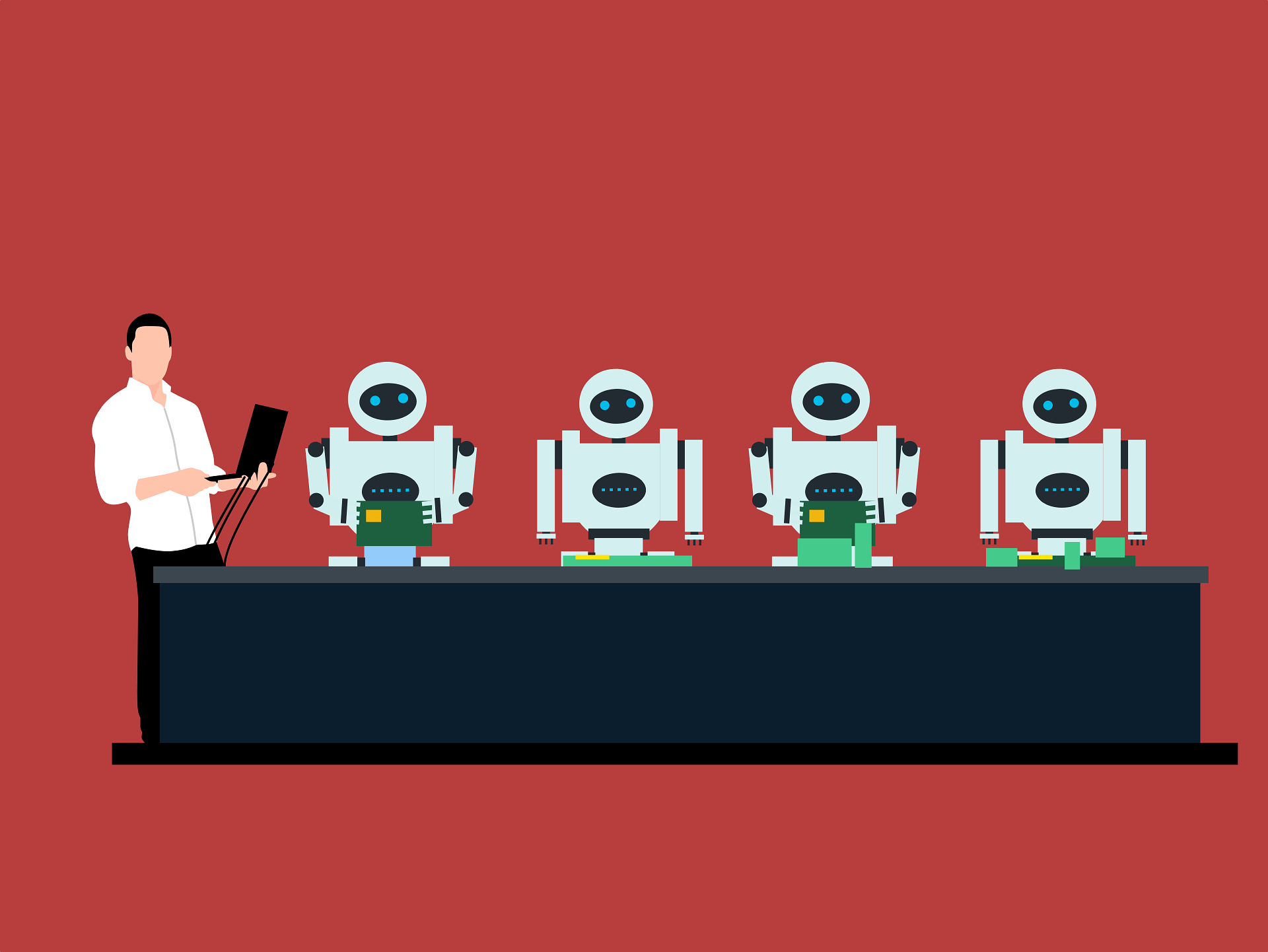
Discover how automation transforms roofing and retail operations, boosting efficiency and reducing costs through smart technologies like MDM and AI systems.
From smart thermostats that adjust room temperatures automatically to advanced algorithms that manage stock trades in real time, automation touches nearly every industry today. The tools and technologies help businesses enhance efficiency, reduce costs, and minimize errors.
Yet, some business owners and administrators are still on the fence about automation implementation. Most of them are deterred by the higher initial investment and feel like the ROI won’t be as high as they might expect.
If you’re on the side of skeptics, keep reading. In this article, we’ll analyze the benefits and challenges brought forth by automation to two completely different business models and industries: retail and roofing.
The Role of Automation in the Roofing Industry
The roofing market size in the US was valued at USD 27.46 Billion in 2023 and is expected to reach USD 42.66 Billion by 2033. The industry comprises roofing contractors that employed over 200,000 workers between 2018 and 2023.
It’s also one of the fastest-growing industries in the country due to accelerated urbanization and technological innovation. All this data points out that anyone starting a business in this industry should have no problems growing and reaching new heights.
However, it’s not that easy to find reliable and competent workers. Roofing is a labor-intensive and time-consuming job, and many contractors don’t use modern technologies to make things easier. Sadly, this deters young workers from applying since most of them are interested in working with digital and robotic technologies.
If this situation continues, there may come a day when roofing contractors won’t be able to find new and skilled workers to take over from the old ones. Luckily, things are changing as the industry becomes more accepting of automation and tools that can assist human workers.
Here’s how:
Smart Estimation Software
First, we have software tools that streamline the administrative and prep work behind any great project. With a reliable tool, like a roofing estimate template, roofers can efficiently measure, create estimates, and secure customer approvals—all from one device
Rather than relying on a technician who has to go on site, measure the roof, and calculate the size of the project, roofers can simply use this software to draft an accurate estimate within minutes. These estimates also help reduce waste and eliminate mistakes that can be costly for the company.
Drones and Robotics
Whether it’s inspecting, repairing, or installing a new roof, the job involves pretty high risks for workers. But there may be a time when you don’t have to risk human lives to install shingles on top of a house.
Big contractors already use drones for inspections and measurements. These devices are equipped with LiDAR, high-definition cameras, and photogrammetry and can assess damage or generate comprehensive reports.
Robotic drones can also power wash roofs, apply spray coating, or even install shingles. These devices are faster, more accurate, and less risky than a fully human workforce. Of course, experienced operators are still needed for these devices, but the benefits are very clear.
Augmented Reality (AR)
How easy would it be if your customers could see a virtual replica of the roof options you can offer? This is possible with the help of smart software that uses augmented reality to superimpose virtual roofs on the client’s house.
This lets the buyers get a better image of the future aspect of their home, and the roofing contractor spends less time negotiating and convincing.
Retail Operations Leveraging Automation
With the rise of online shopping and social media promotion methods, the retail industry is bursting these days. In the US alone, the industry has reached over USD 7,200 Billion in 2023 and shows no signs of slowing down.
This trend is visible worldwide, but it’s important to highlight that eCommerce is the main driving force. According to current forecasts, by 2027, global B2C eCommerce revenue is expected to grow to USD$5.5 trillion.
Now, this exponential growth wouldn’t have been possible without help from automation and smart technologies. In fact, AI is revolutionizing eCommerce and retail operations by streamlining processes, enhancing customer experiences, and driving operational efficiency.
Here are a few instances where automation, paired with AI, makes a huge difference:
Streamlined Workflows
Automated software and tools help streamline repetitive tasks, reducing manual errors and improving overall operational efficiency. For instance, workflow automation can handle tasks such as product merchandising, customer segmentation, and sales campaigns.
You can also streamline order processing workflows, ensuring that orders are fulfilled accurately and quickly. This improves operational efficiency and reduces the likelihood of errors.
Let’s take the example of a fashion retailer. By automating tasks such as generating invoices, updating inventory, and sending shipping notifications, they can reduce processing times by 40%, which improves delivery speed and enhances the overall customer experience.
Better Customer Service
Speaking of customers, automated systems (such as intelligent chatbots) can offer extensive and comprehensive customer support 24/7 all year long. Furthermore, chatbots provide instant assistance and can easily handle several customers simultaneously.
This way, your team of human experts will only get to work on the more complex tasks that need a more personalized approach. As a result, your customer service team won’t risk burnout (which is quite common among human operators) and can collaborate with other departments.
Extra tip: Pay attention to the legal aspects of collecting and processing customers’ data. Intelligent customer service systems use sensitive information to deliver a positive experience.
Improved Inventory Management
Stock and inventory can be a pain in the behind for retailers, especially during high-demand periods when products fly off the shelves (virtual or not). But nowadays, things are a lot easier to manage due to smart technologies.
Here’s what they can do for your business as well:
- Real-time tracking and updates: automated inventory management systems track stock levels in real time. This helps avoid stockouts and overstock situations.
- Fewer manual errors: by automating tasks that used to be manual, such as data entry and tracking, retailers can improve inventory accuracy and reduce the occurrence of costly mistakes.
- Efficient order processing: a smart inventory system can generate purchase orders, track sales and purchases, and update inventory records automatically.
- Demand forecasting: algorithms use data analytics and machine learning to forecast demand so you can be fully prepared for fluctuations.
- Cost savings: by reducing manual labor, retailers can save on operational costs. Automation also helps optimize stock levels, reduce waste, and minimize the need for excess inventory.
Challenges Businesses Face While Adopting Automation
Every business, regardless of industry, will face some type of challenges when adopting new technologies and processes. In the case of roofing contractors, automation can introduce new safety challenges, quality control issues, and more. Smaller companies may also face a lack of resources for the initial investment and employees’ resistance to change.
Retailers may face integration difficulties since new automation systems don’t always play well with existing technologies. There are also data privacy and security concerns about handling sensitive customer data.
Other challenges to keep in mind are:
- The need for process optimization: before you can automate, you have to optimize processes. Otherwise, your new system will work with flawed data, leading to inefficiencies.
- Vendor dependency: relying on third-party vendors for automation solutions can introduce risks related to vendor performance, reliability, and support.
- Regulatory compliance: every business must ensure that automated systems comply with industry-specific regulations and standards.
Wrap Up
Whether we’re talking drones and software that can cut administrative work in half or intelligent chatbots and advanced inventory management systems, automation is undoubtedly the way forward. If you want to stay competitive in a dynamic market, you have to adjust and embrace these technologies.
Was this news helpful?







 Yes, great stuff!
Yes, great stuff! I’m not sure
I’m not sure No, doesn’t relate
No, doesn’t relate



